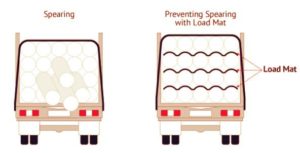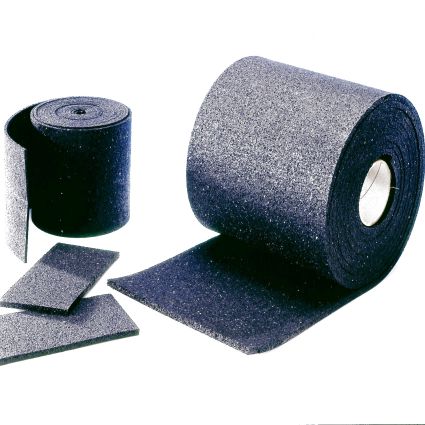Anti Slip Mats for Load Restraint
Anti-Slip Mats improve your overall load securement and significantly increase the friction between your cargo and the mode of transportation.
Cordstrap Anti-Slip Mats increase the coefficient of friction to up to 0.8µ. This is a dramatic increase in friction compared with wood on wood, wood on steel or steel on steel contact.
Increased friction will help you secure your cargo even when limited lashing points are available. In some situations, using Cordstrap Anti-Slip Mats will reduce the number of lashings required, while still being compliant with rules and regulations.
Using Cordstrap Anti-Slip Mats eliminates the dangerous risk of loads shifting during transportation. This improves the safety of drivers and other road users!
Anti-Slip Mats can be used for all kinds of general and specialist cargo on trucks, trains, ships or planes.
Benefits Cordstrap Anti-Slip Mats
- Friction coefficient of minimum 0.8µ
- Conform to latest EN and DIN standards
- Manufactured from 100% recyclable materials
- Quick and easy to apply
- Various sizes and thicknesses available
Cordstrap Anti-Slip Mats
Technical Specifications
Cordstrap Anti-Slip Mats come in rolls of various thicknesses and sizes. Simply cut or tear of the required shape and size and place between your load.
Cordstrap anti-slip mats are made from recycled rubber granulate and a polyurethane binder. According to the European Standard EN 12195-1:2010 the coefficient of friction for rubber anti-slip mats may be taken as 0.6µ against other materials, dry or wet, as long as the surfaces are clean and free from frost, ice, and snow.
| Item | Description | Dimensions | Ctn Qty |
|---|---|---|---|
| ASM-4 | Cordstrap Anti-Slip Mat 4mm | 4800mm x 150mm x 4mm | 1 roll |
| ASM-8 | Cordstrap Anti-Slip Mat 8mm | 4800mm x 250mm x 8mm | 1 roll |
Video Anti-Slip Mats vs. No Anti-Slip Mats
What is friction?
 Friction is a force that resists relative motion between two surfaces in contact. Friction between goods and their loading platform, e.g. a pallet, helps to prevent movement. Different contact surfaces have different coefficients of friction. Each unique combination of materials has its own frictional value and its own coefficient (µ). For example, wood on wood or metal on wood each have a different coefficient (µ). The higher the coefficient, the less likely it is that the load will move.
Friction is a force that resists relative motion between two surfaces in contact. Friction between goods and their loading platform, e.g. a pallet, helps to prevent movement. Different contact surfaces have different coefficients of friction. Each unique combination of materials has its own frictional value and its own coefficient (µ). For example, wood on wood or metal on wood each have a different coefficient (µ). The higher the coefficient, the less likely it is that the load will move.
Get in touch
We look forward to assist you
Call, mail or simply leave your details and we’ll get back to you promptly.


